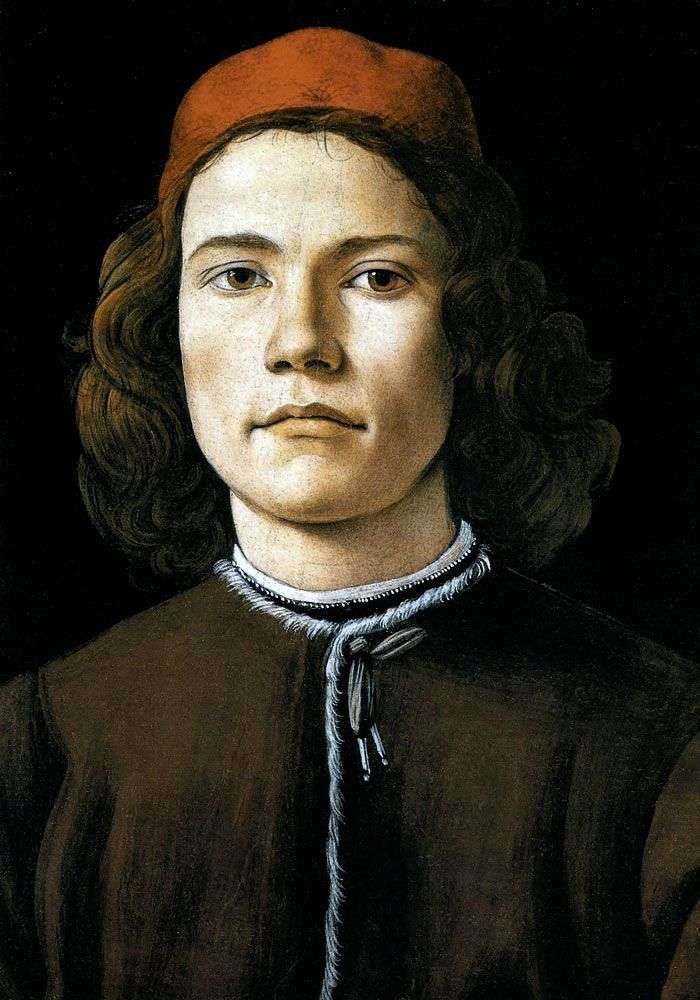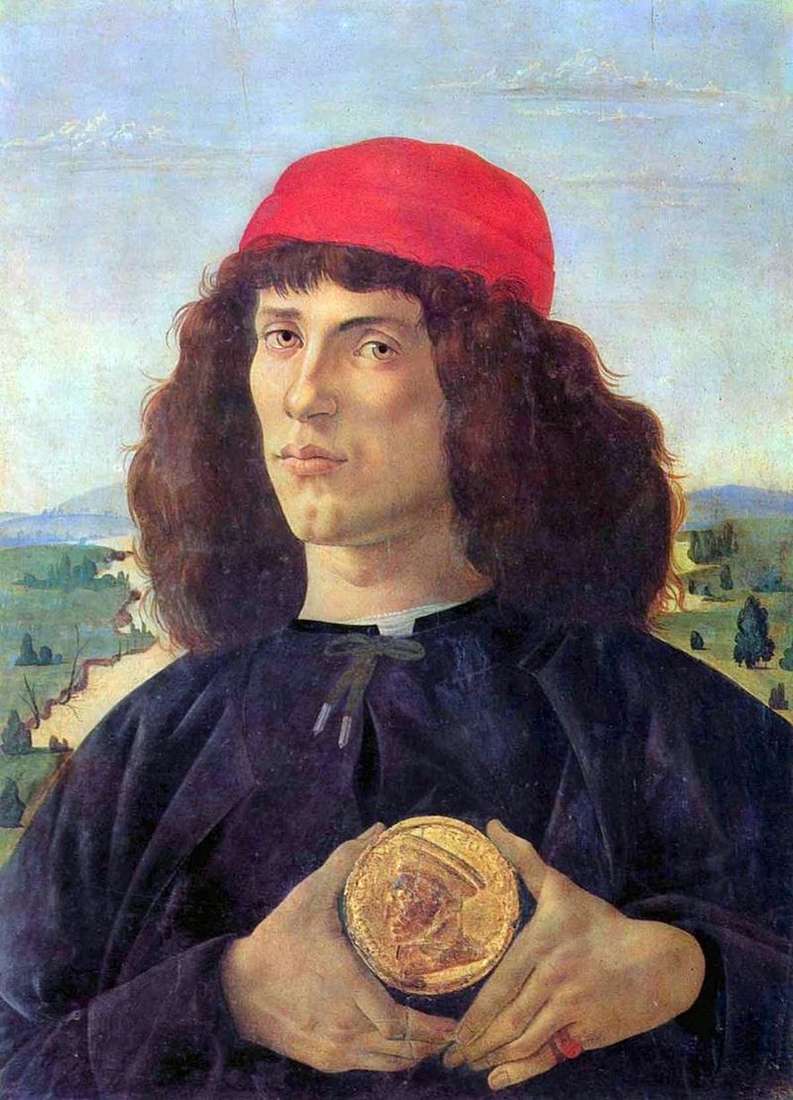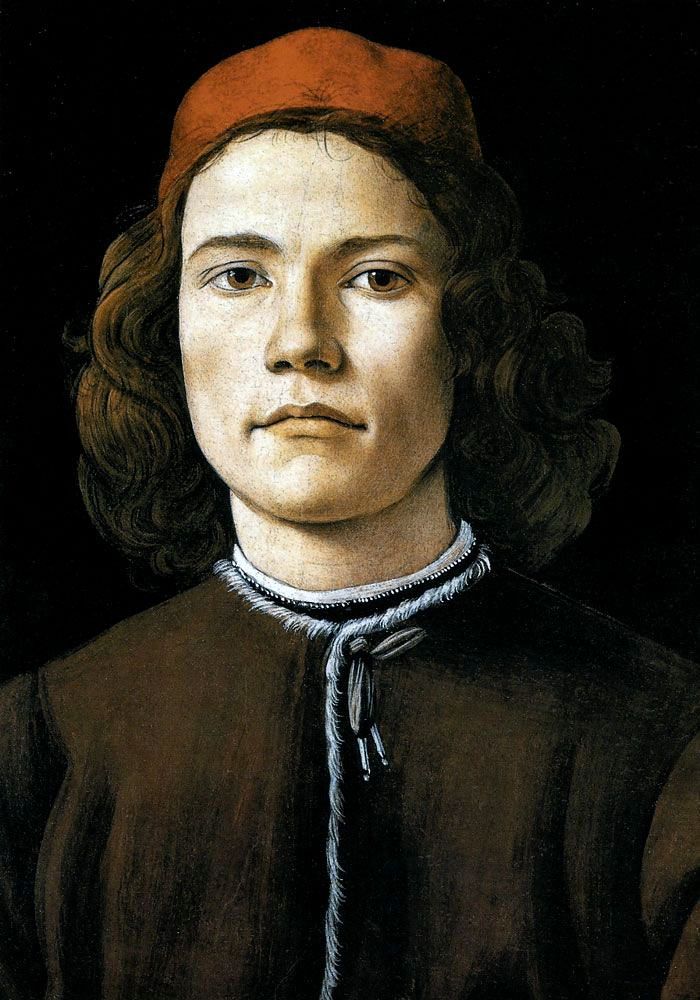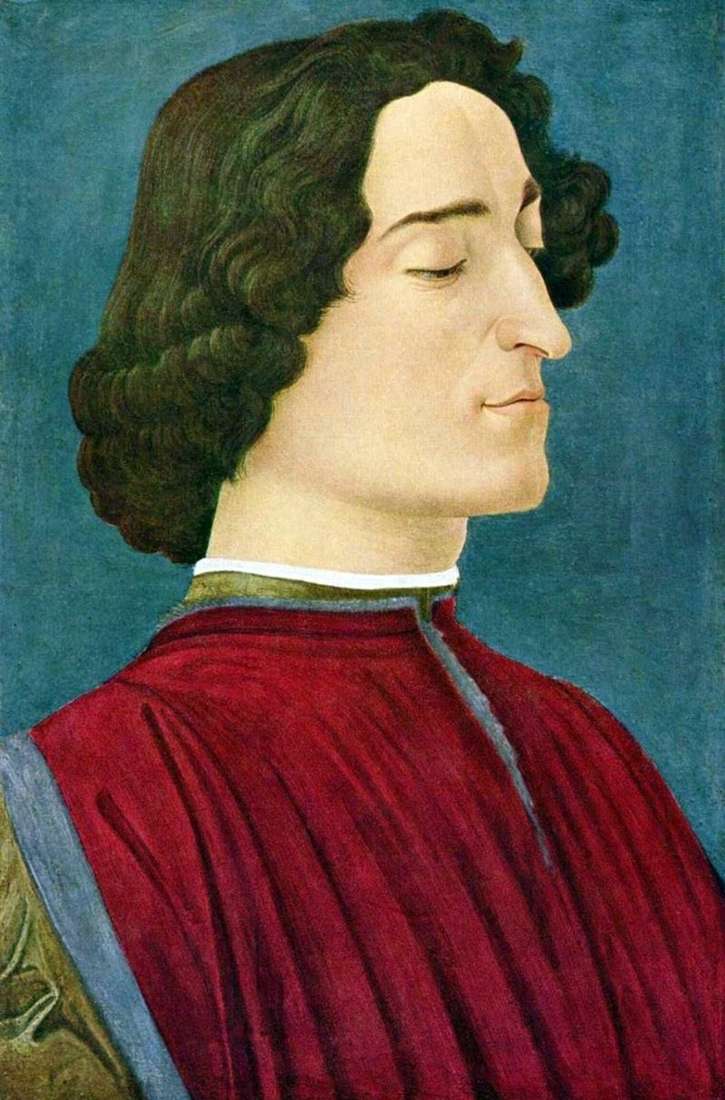
Painting by artist Sandro Botticelli “Portrait of a Young Man”. The size of the work is 37.5 x 28.2 cm, wood, tempera. The portrait was written eight to ten years after “Portrait of a man with the Cosimo Medici medal”. In place of the vigorous volitional image, created by the artist earlier, comes the image of a young man immersed in the depths of the inner world.
The experiences of the youth are hidden, and the interpretation of the portrayed by the artist corresponds to this spiritual expressiveness. The intensity of the hidden movements of the soul appears on this dreamy face in the focussed look and asymmetry of the soft line of the mouth.
In the Renaissance, the life of the contemplative was clearly separated from life. The first is devoted to actions aimed at the common good, the second is closely connected with the inner world of the individual, with the development of the spiritual capabilities of the individual. Up to the middle of the XV century, preference was given to the portrait type of a man who gives all the powers of reason and will to civil or military service.
Even on the memorial picture of outstanding thinkers and poets, an active, heroic ideal was superimposed. But gradually, under the unconditional influence of the ideas of Neoplatonism, the “center of gravity” in the interpretation of the portrait moves towards a contemplative life. The notion of the confrontation of different principles in the soul and the aspiration of it to the source of absolute beauty, brings new facets to the portrait image.
 Portrait of a man with a medal by Sandro Botticelli
Portrait of a man with a medal by Sandro Botticelli Portrait of a young woman by Sandro Botticelli
Portrait of a young woman by Sandro Botticelli Portrait of Simonetta Vespucci by Sandro Botticelli
Portrait of Simonetta Vespucci by Sandro Botticelli Portrait of a young man by Sandro Botticelli
Portrait of a young man by Sandro Botticelli Portrait d’un jeune homme – Sandro Botticelli
Portrait d’un jeune homme – Sandro Botticelli Portrait of a young man by Filippino Lippi
Portrait of a young man by Filippino Lippi Portrait of Giuliano Medici by Sandro Botticelli
Portrait of Giuliano Medici by Sandro Botticelli St. Augustine the Blessed by Sandro Botticelli
St. Augustine the Blessed by Sandro Botticelli